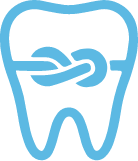In Invisalign treatment, a resin called attachment is adhered to the tooth surface which can maintain the fit between the aligner and teeth, and can move the teeth more essentially. Various shapes are selected for the attachment depending on the purpose of the movement, and the doctor is particular about selecting the shape and reproducing the precise shape on the surface of the teeth.
Aligner Orthodontic (Invisalign®)
Aligner Orthodontic (Invisalign®)
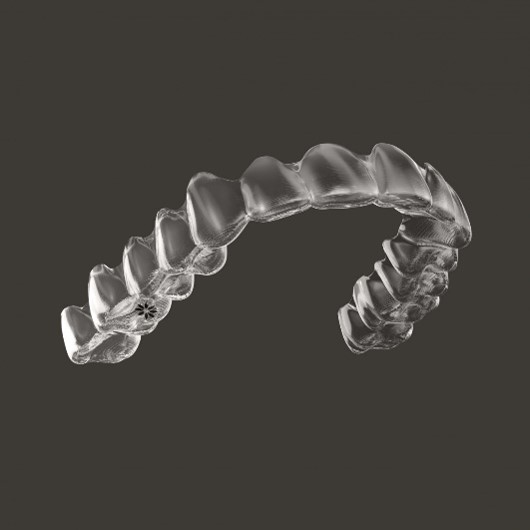
Advantages of Invisalign
- 1. Transparent and inconspicuous, people around will not notice that you are receiving treatment.
- 2. Removable, easy to brush teeth, and hygienic.
- 3. Compared to metal braces, there is less pain and discomfort.
- 4. Requires relatively fewer visits for adjustments.
- 5. Suitable for people who resist metal braces psychologically.
- 6. Suitable for people with metal allergies.
Utilization of three digital tools for successful orthodontics!
In Invisalign treatment, we place great importance on the predictability of achieving treatment goals. Our clinic uses three digital tools necessary to improve the accuracy of treatment.
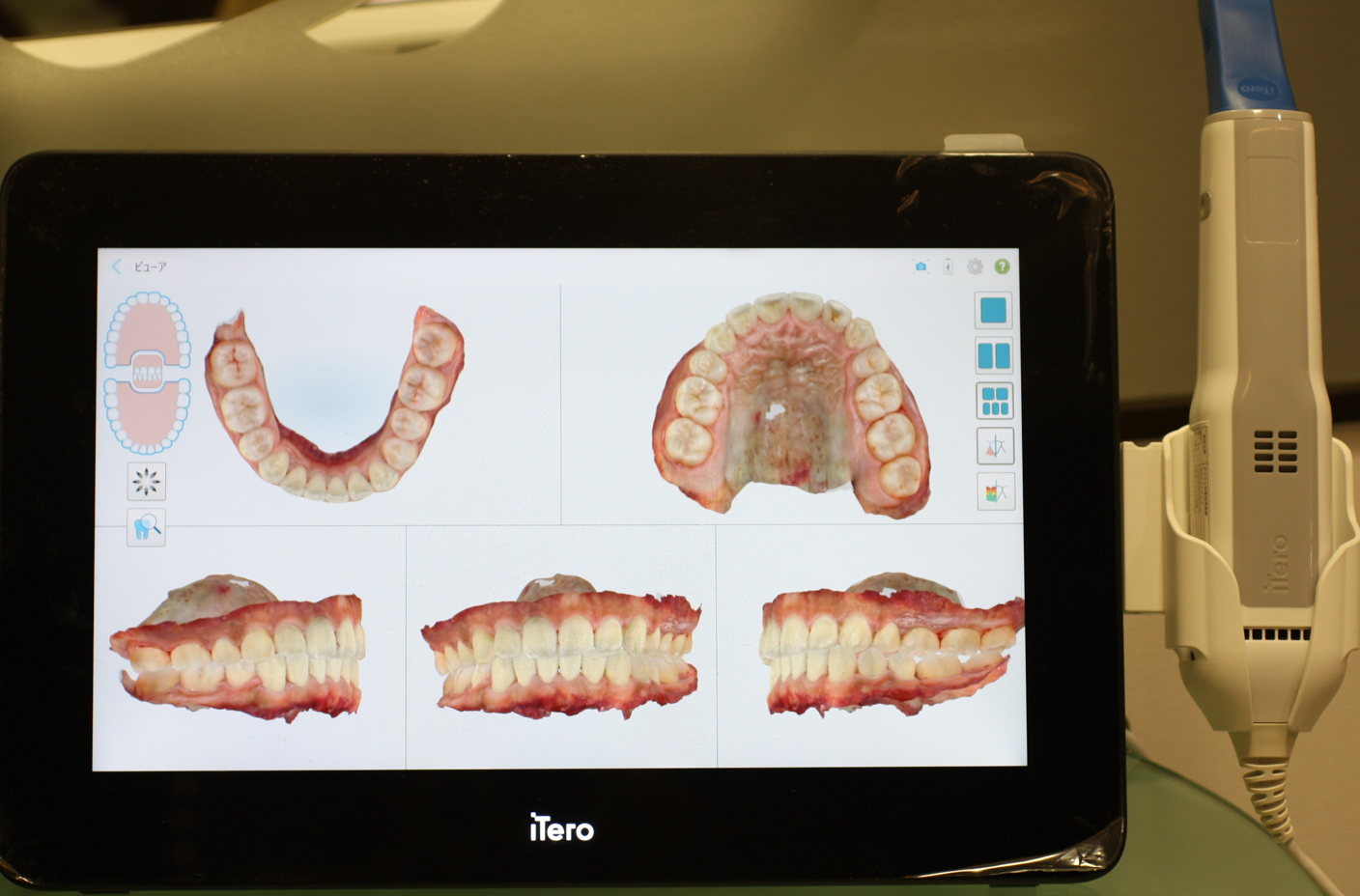
1. Intraoral scanner “Itero”
Scanning the patient’s dentition and reproducing it on the screen. It can also show the simulation of dentition after treatment.
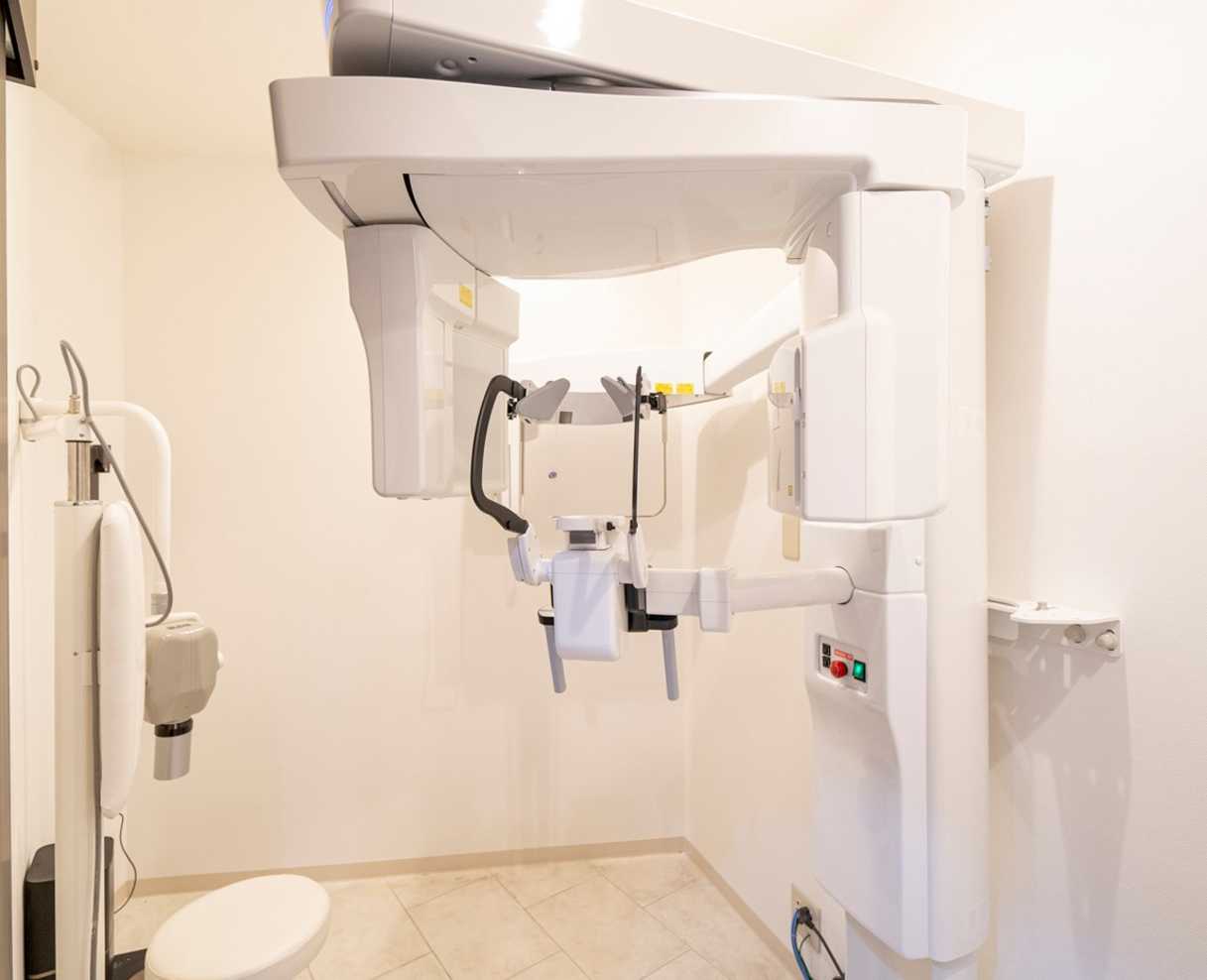
2. Dental CBCT (Cone Beam Computed Tomography)
Understanding the thickness of jaw bones, length and shape of the tooth roots, and relationship of adjacent teeth, can help formulating a safe and effective treatment plan.
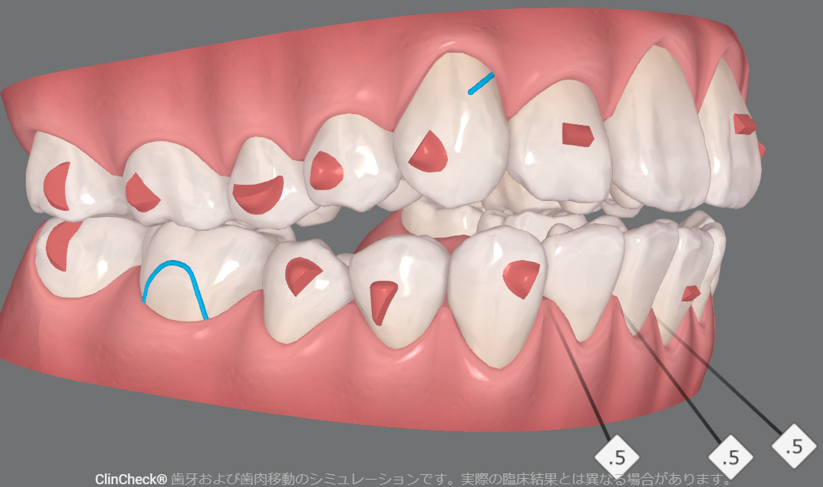
3. “ClinCheck” simulation software
During Invisalign orthodontic treatment, we use simulation software “ClinCheck”. Within ClinCheck, we will determine which teeth should be moved to which position and in what order. Then we will develop a treatment plan to ensure that the teeth in upper and lower jaws having a balanced bite throughout the dental arch finally.
Request from the clinic
In Invisalign treatment, we move teeth by 0.25 millimeters per aligner. Unlike wire braces, patients themselves need to progress the treatment by changing the aligner. Replacing new aligner on the designated day with using auxiliary devices such as chewies or inter-jaw elastics is important to fit the aligner to dentition firmly. It is also important to adhere to the daily wearing time, as these factors are keys to the success of the treatment. We ask for your cooperation in these matters.
clinic, which is widely used not only in orthodontic clinics but also in other clinics of “general dentistry (GP)”. However, please note that “the simple teeth alignment simulation” produced by iTero in these GP clinics does not correspond to the “precise simulation” performed by orthodontists. Please do not confuse the two.
The same Invisalign product can be treated differently at different clinics!
Our commitment
We have years of experience and expertise in orthodontic treatment with wire braces. We utilize this experience in aligner orthodontics, to aim for the same quality and outcome as wire braces, even in difficult cases.
Wire braces may not look as good, but it is actually a highly mature technology that can move teeth over a wide range and has a high level of control over tooth roots. It is efficient, cost-effective, and produces high-quality results. Therefore, national university hospitals in Japan still use this wire orthodontics as their main treatment. In contrast, aligner orthodontics has weaker control over tooth roots and tends to have a narrower range of tooth movement. In cases where premolars need to be extracted or teeth need to be moved over a long distance, teeth are easy to be tilted thus cause treatment failure. This can be covered by the experience of orthodontist, who carefully compares the actual tooth movement with the ClinCheck simulation, and use auxiliary devices or order additional aligner series to reach the final position.
The mechanism of aligner orthodontic treatment involves using a computer software to simulate and create a series of aligners from the “initial mal-aligned dentition” to the “final aligned dentition”. This simulation is like a blueprint for the treatment, indicating the roadmap from initial to final position. “ClinCheck” of Invisalign® has advanced greatly, as long as the digital impression is taken, doctor does not need to do anything. Engineers and artificial intelligence of Invisalign® will automatically create a treatment plan with the ClinCheck software. However, the engineers are not orthodontic specialists, thus default ClinCheck simulation often lacks practicality. If doctor use these simulations without any modification, various problems can occur. To successfully achieve treatment, it is essential for the orthodontist to use their specialized knowledge to manually adjust the ClinCheck. For more complex cases, additional appliances such as intermaxillary elastics or anchorage screws may be necessary. To use an analogy, even with a car equipped with automatic driving functions, it is still difficult to imagine safe driving without a skilled driver taking responsibility for the operation.
Before carrying out any orthodontic treatment, a thorough “diagnosis” should be performed. Diagnosis involves precise examinations to assess not only the occlusion but also the overall facial and jawbone morphology, in order to determine the necessity of tooth extraction; and decide the final position of dentition after treatment. In other words, diagnosis is setting the goal of the treatment. Once goal is determined, the steps and methods to go from the initial to the final position can be imagined. Diagnosis is a decision made by orthodontists using their knowledge and experience, and cannot be substituted by any artificial intelligence or software, as the latter only calculates and simulates the alignment of teeth without considering information such as the position relationship of facial profile, upper and lower jawbones width, and thickness of the alveolar bone.
Both diagnosis (setting goals) and ClinCheck (roadmap design) are crucial for the success of the treatment of Invisalign. Most failure caused with Invisalign when inexperienced practitioners leave all these two procedures to the engineers and AI, then blindly follow default ClinCheck. Of course, Invisalign updates its ClinCheck system every year, and the quality has improved dramatically compared to the past, thus simple cases can be treated exactly with just software. However, the ability to distinguish between simple and difficult cases before starting treatment is still essential, so ultimately the experience of the orthodontic practitioner orthodontic treatment is always most important.
【Point 1】Fully utilize the information from X-rays in simulations
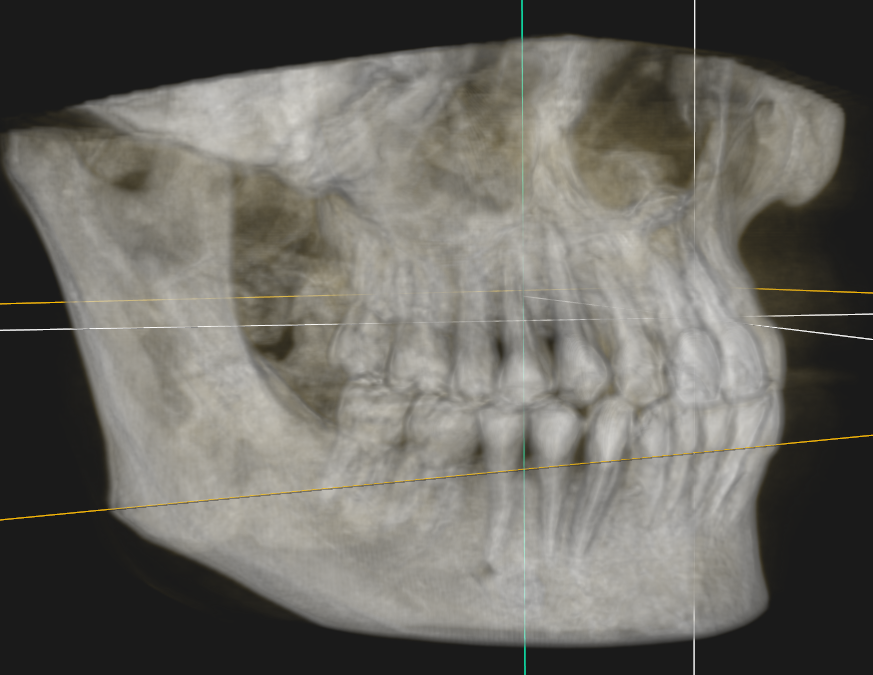
The ClinCheck simulation software used in Invisalign lacks information such as the thickness of jawbones, the relationship between upper & lower jawbones, the relationship between jawbone and skull, and the shape and position of the tooth roots. To create a simulation with high predictability, it is necessary to obtain these missing information from dental CT scans (3D jawbone information) and cephalograms (lateral profile and position information of the mouth and head) and take them into consideration. Cephalograms quantify the conditions how front teeth protrude, and determine the precise amount of change in the position of the front teeth and mouth. Simulations that ignore CT information can cause severe root absorption, moving the roots of the teeth outside the jawbone. Our clinic proposes safe, high-reproducibility, and high-aesthetic treatments. (From August 2023, only the Comprehensive Package can incorporate dental CT information in Invisalign treatment.)
【Point 2】Minimize the amount of IPR (interproximal reduction)
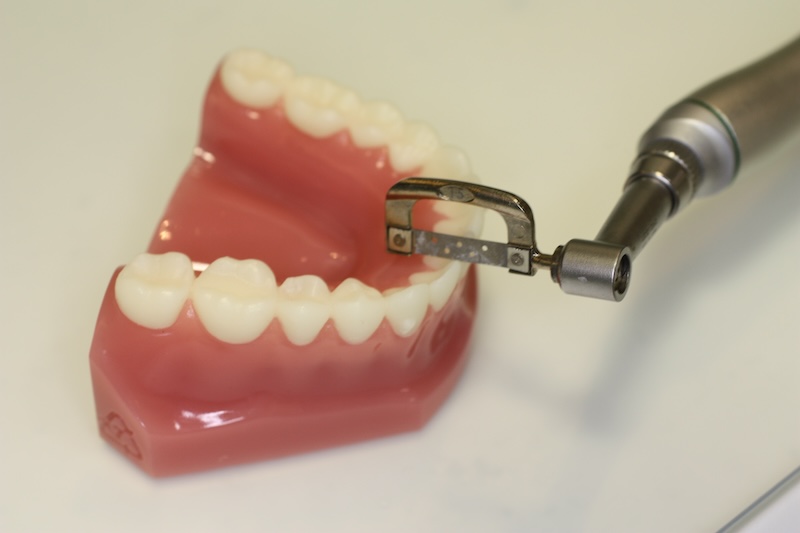
The essence of orthodontic treatment is how to gain and distribute space. In most cases, insufficient space necessitates the creation of more. This can generally be divided into two methods: moving teeth to create space (such as expanding the dental arch or distal movement of posterior teeth) and reducing the size of teeth by slicing, known as IPR, Interproximal reduction. The latter is a much simpler method for doctors than the former. Although it might seem to damage teeth, a small amount of reduction (about 0.25mm per adjacent surface) is a legitimate method described in textbooks. However, because the movement efficiency of teeth with aligner orthodontics is lower than with traditional braces, some practitioners choose to use only IPR instead of moving other teeth to create space. This can lead to excessive tooth reduction, potentially causing significant tooth deformation or sensitivity. As previously mentioned, our clinic aims to achieve the same outcomes as traditional braces, thus we move teeth first to create enough space and only resort to IPR when absolutely necessary, minimizing the amount of tooth reduction.
【Point 3】Adjust carefully during visits
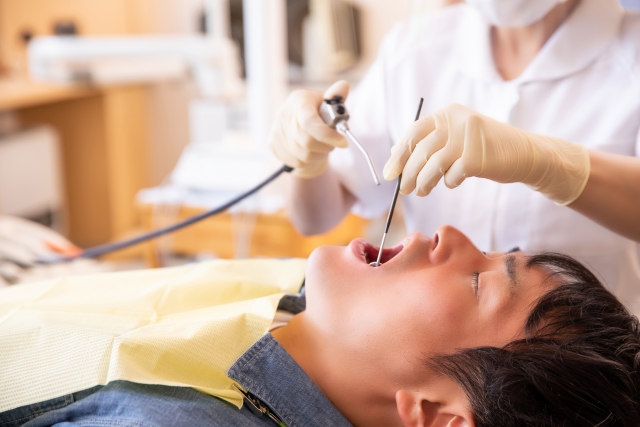
One of the advantages often cited for aligner orthodontics is that the number of visits to the clinic is reduced. There are even systems that claim that once the dental impression is taken, there is no need to visit the clinic at all. This is because the mechanism of aligner orthodontics involves simulating a series of aligners from the initial “malaligned position” to the final “well-aligned position” and producing them from the beginning. If all of these aligners are given to the patient to wear at first, theoretically, there is no need for visits to the clinic. However, the initial simulation will almost certainly deviate from the actual movement of dentition (the aligner and the dentition will no longer fit together). This can result in poor results, longer treatment periods, or even cause tooth root absorption and pulp necrosis. It is difficult for patients to notice this deviation themselves, and even if they do, they cannot take action. Therefore, regular visits to the clinic are still necessary, with the doctor paying close attention to monitoring and taking measures to correct any deviations. For small deviations, auxiliary devices are generally used; and for larger deviations, additional aligner series are produced after taking a new dental impression. In our clinic, we recommend monthly visits, as with wire orthodontics. At each visit, we carefully compare the simulation and take immediate action if any deviations occur, minimizing the treatment period. We also perform cleaning and cavity checks at each visit, as much as time allows. Of course, it is not wrong to reduce the number of visits by taking advantage of the nature of mouthpiece orthodontics, and we can adjust the treatment schedule as much as possible to suit the patient’s convenience.
【Point 4】Carefully adhere the attachments
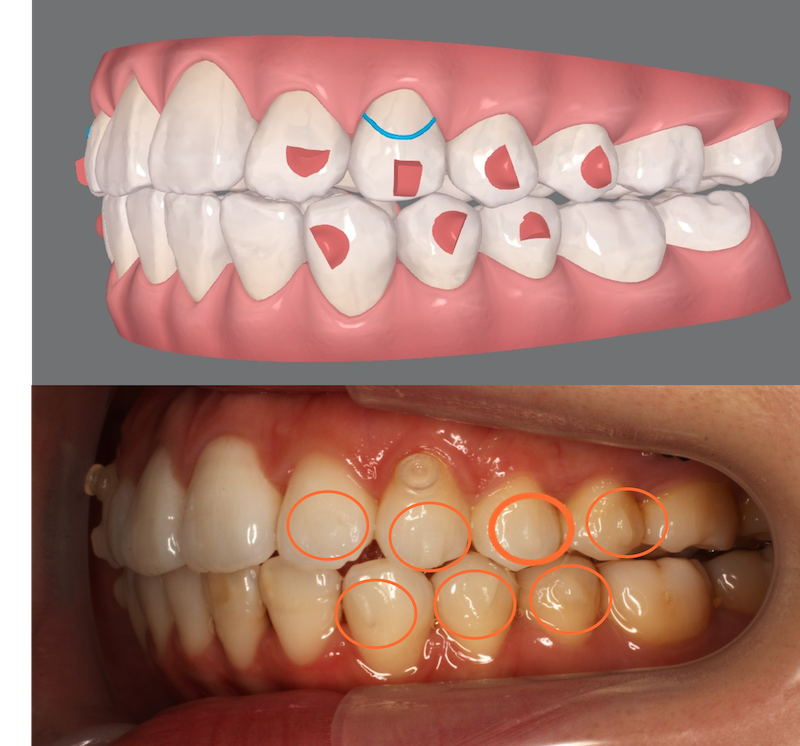
【Point 5】Assistance with elastics
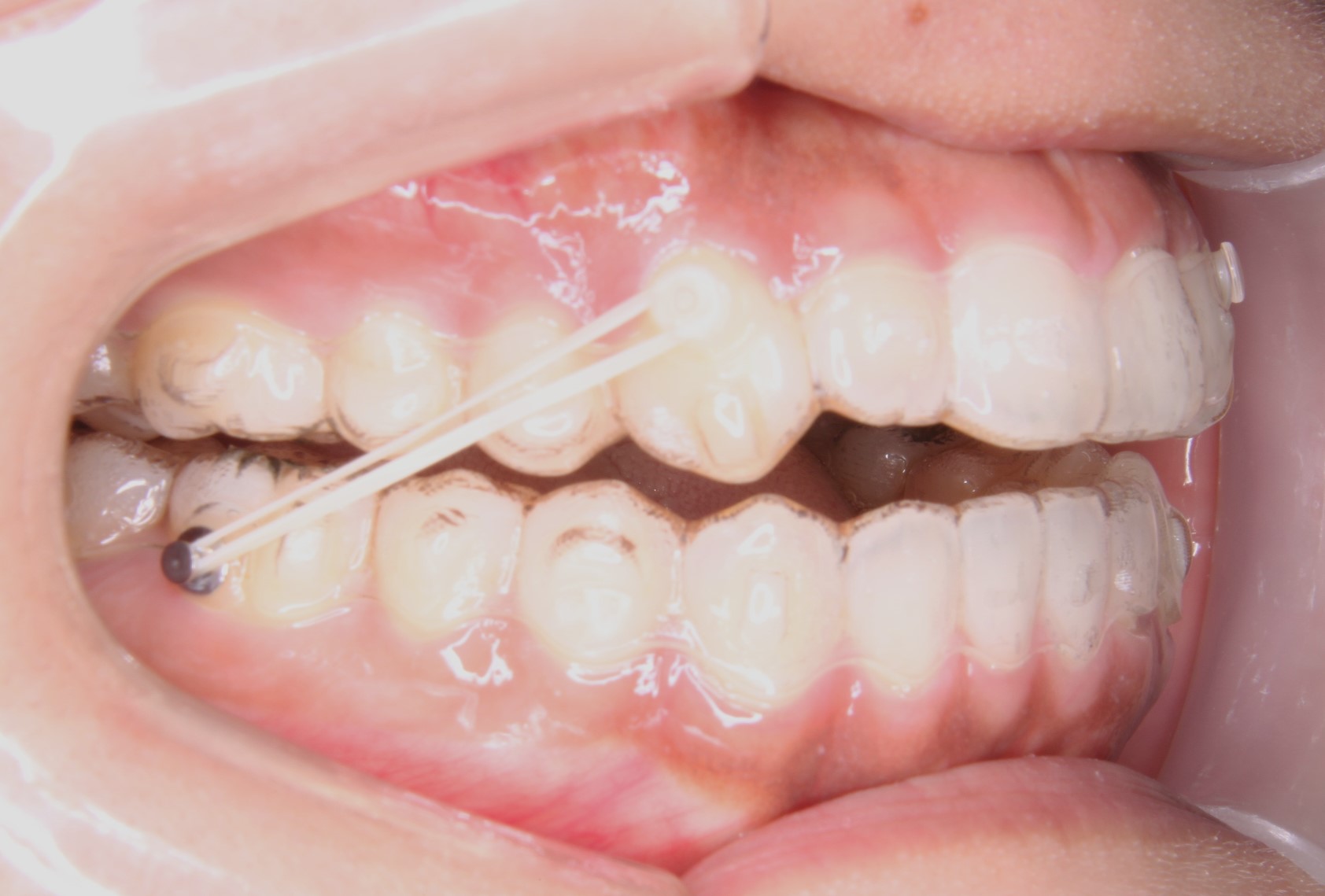
During orthodontic treatment with aligner, it may be necessary to place rubber bands called intermaxillary elastics on some teeth to create a proper bite. We kindly ask for the patient’s cooperation in wearing the rubber bands, as they are necessary for creating a proper occlusion. Our staff will also provide careful instructions and guidance on how to wear them.
【Point 6】Achieve the best outcome with anchor screws
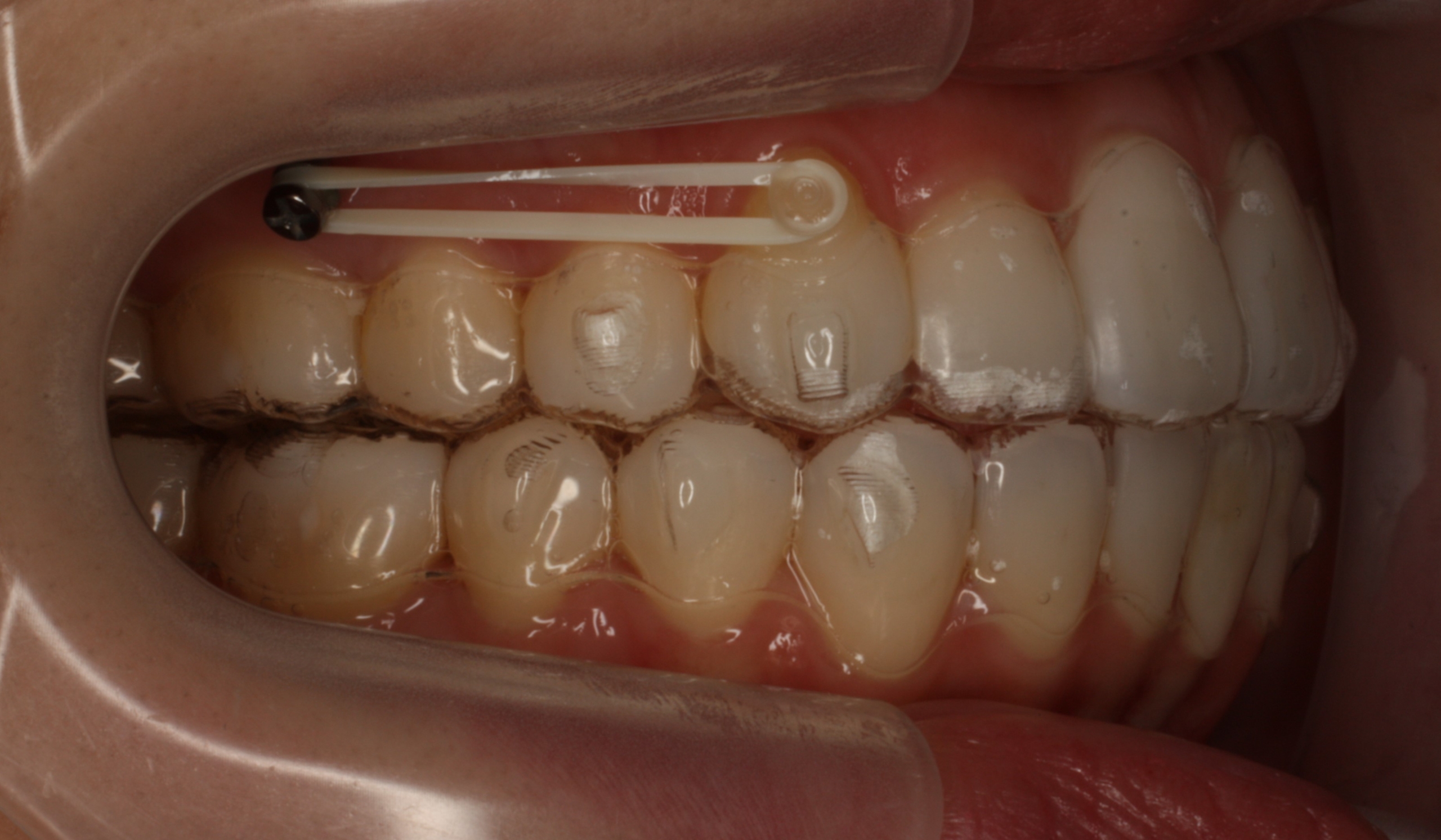
In order to move teeth, an anchorage (support, fixation source) is necessary. When two teeth pull against each other, both teeth naturally move. However, in cases where it is inconvenient for one tooth to move according to the treatment plan (resulting in an imperfect finish), it is necessary to use a small screw called an anchor screw. Anchorage screw is implanted in the alveolar bone. When pulling from a non-moving screw instead of pulling against each other, inconvenient tooth move will not occur. This is a technique commonly used in wire orthodontics, but in wire orthodontics, the bite force can often be used as an anchorage. Aligners cannot use the bite force because they cover the occlusal surface, so the use of anchor screws is more common. In our clinic, we aim for a perfect finish by firmly using anchor screws in such situations.
【Point 7】 Fewer Visits Required
With clear aligners, fewer clinic visits are needed, which is why patients come to us from Bunkyo Ward and even further away. The maximum interval between visits, which is once every 3 months, is very appealing.
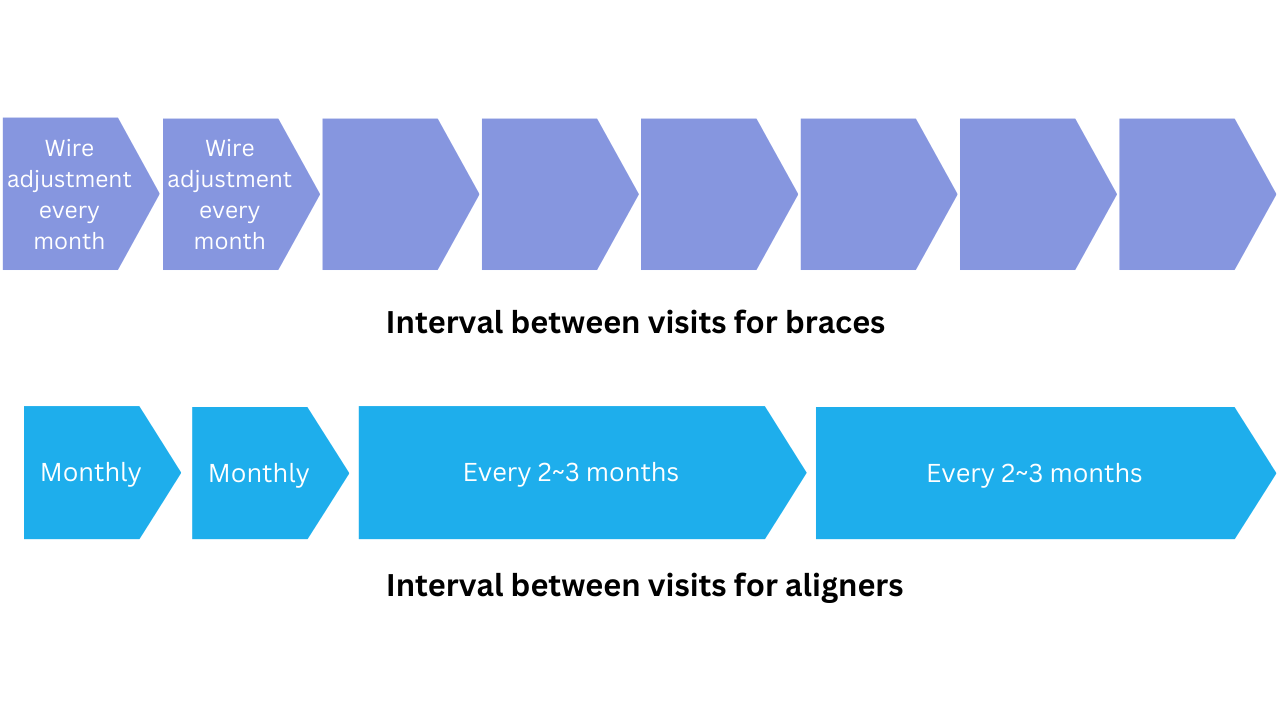
*The frequency of visits may vary depending on the symptoms, treatment plan, and the usage of the aligners.
*The above is a comparison image of visit frequency between wire braces and clear aligners.
A Combination Approach Using Wire Braces
Instead of switching to wire braces as a recovery measure when the teeth do not move as planned during treatment with a mouthpiece-type orthodontic device alone, we also propose a method that initially controls the movement of the teeth with wire braces and then switches to a mouthpiece orthodontic device. Especially in cases of extraction, this approach has the advantage of a high predictability of achieving the treatment plan, fewer detours like recoveries, and the possibility of shortening the treatment period, thus allowing patients to proceed with treatment without losing motivation.

